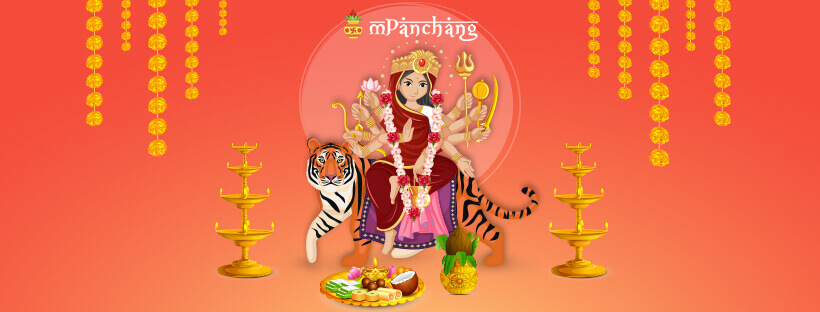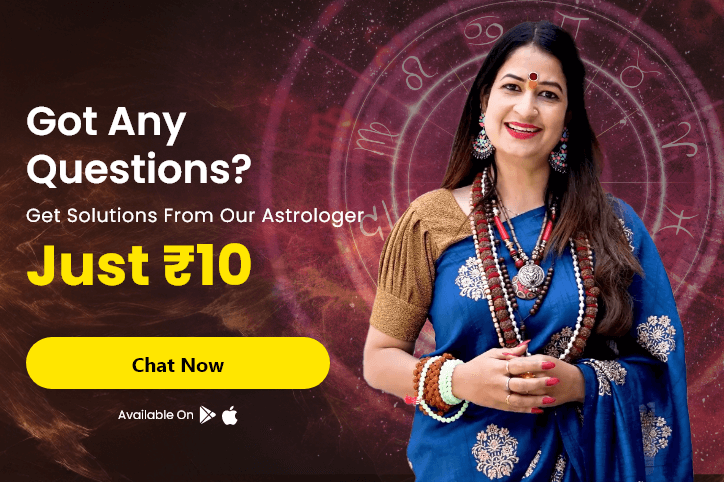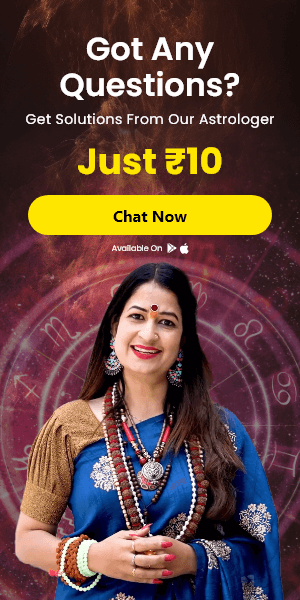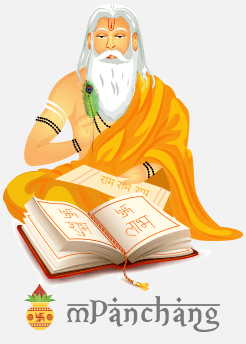The shredding of leaves in Autumn or the blossoms of the Spring sees the coming of the mother upon Earth. India, the lands of many customs and traditions, welcomes her in many ways.
Many of us are unaware that Navratri comes four times a year.
Don’t believe it?
Well, let us tell you about all four of them, while discussing the Spring and the Autumn Navratri in detail.
Navratri through the Year
There are four Navratris in a year. Let us find out about the dates and the regions within India where they are primarily celebrated.
Do you wonder when Navratri is celebrated?
Below are the dates of Navratri for this very year.
|
Different types of Navratri |
Primary regions of celebrations |
|
The Chaitra Navratri or Basant Navratri (Spring) |
Himachal Pradesh, Uttarakhand (Uttaranchal), Haryana, Punjab and Jammu and Kashmir |
|
The Shardiya Navratri (Autumn) |
Gujarat, Maharashtra, West Bengal, Kerala and Kashmir |
|
Ashad Navratri Navratri (Monsoon) |
Southern India |
|
Poush/Magh Navratri |
Northern India |
What is Navratri?
Navratri is a popular festival and is celebrated with great pomp and show all across the nation. Navratri is celebrated to commemorate the good over evil. It is a nine day festival. Have you heard about the Durga Puja, Navratri, Dandiya, Ayudh Pooja, Saraswati Pooja? Primarily all these Poojas are enough to sum up what Navratri is. All these Poojas are done at the same time of the year, during the September-October nine-day Navratri Celebrations. The most common reasons why people come together to celebrate this occasion revolves around two legends primarily.
Most Popular legends behind the celebration of Navratri

One legend encircles Lord Rama’s victory over Ravana and the other encircles the victory of Devi Durga over the demon king Mahishasura Mardini.
It is said that Lord Rama prayed to Shakti before he killed Ravana. When Lord Rama finally decided to pray to Devi Swaroopini Shakti, he was unable to find a priest for the Prayer. It is then that Rama requested Ravana to be the priest and Ravana accepted his proposal knowing that Rama had organised the Pooja to defeat and kill the demon God himself. On the last day of the Pooja, Rama failed to arrange or the 108 lotuses and was short of just one lotus. Ravana asked him to bring the lotus and unable to find any Ram offered his own eye for the lotus. Maa Shakti blessed him and did Ravan, who went away without asking even once why he had performed the Pooja. It is thus, that Ravana is known as the greatest Brahmin of all times and worshipped in Southern Indian clans as God.
The next famous fable that goes into the making of this festival so famous is again a triumph of good over Evil is the story of the triumph that Maa Durga had over Mahishasura Mardini. It is said that Mahishasura Mardini was a demon King who wished to conquer heaven. One day when Maa Durga was near her home on Earth, Mahishasur Mardini spotted her. Soon he found out that she held the door to heaven. Unable to bear in mind who she was, he made a plan. In the next few days a love stricken Mahishasura Mardhini often was found roaming around the Goddess. She could understand clearly the reason behind his madness and soon warned him to not wear a false mask. When Mahishasura did not budge the Goddess decided to wage a war. For ten days she fought the cunning Mahishsura and on the ninth day she slayed him. Mahishasura could hide in animal bodies and could take different forms.
Know Why do Marathis celebrate a seperate New Year its called Marathi New Year.
On the tenth day, Vijaya dashami is celebrated. It is that very day when mankind comes together singing praises in the name of the Goddess.
There are nine different forms that are worshipped on the holy occasion of Navratri. Those forms are-
|
The forms worshipped on each day |
Days of Navratri |
Colours associated with each day |
|
First day of Navratri |
Yellow |
|
|
Second day of Navratri |
Green |
|
|
Third day of Navratri |
Grey |
|
|
Fourth day of Navratri |
Orange |
|
|
Fifth day of Navratri |
White |
|
|
Sixth day of Navratri |
Red |
|
|
Seventh day of Navratri |
Royal Blue |
|
|
Eighth day of Navratri |
Pink |
|
|
Ninth day of Navratri |
Purple |
What do these nine days of festivities mean?
Have you ever thought what do these nine days of festivities mean? Each day is different from the other, since on each day the nine most powerful form of the Goddess is worshipped.
- The first day of Navratri is celebrated in the name of Shailaputri. Shailputri is the daughter of the mountain Himalaya. It was her second birth. In her previous birth, she was Sati, the daughter of Daksh. This day strengthens the belief of rebirth when we have unresolved issues from the previous birth.
- The second day of Navratri is celebrated in the name of Brahmacharini. She is the form of austere penance observed by Shailputri when one day Narada Muni visited her and told her about Shiva. According to Narada only a very hard penance could get her to Shivay. She did the penance that pleased Shiva who agreed to marry her. This day commemorates the belief and the resolve a woman can have when she becomes firm on a decision.
- The third day of Navratri is celebrated in the name of Chandraghanta: On the day of marriage, Shivay turned out in a terrorizing form. He was smeared in ashes and snakes hung from his body and his uncombed hairs. His wedding procession included ghosts, demons, homeless animals, Pishach and many more. Seeing them the entire family of Shailputri fainted and to evade further embarrassment, Shailaputri became Chandraghanta. This shows that to protect her own, she can transform herself from the most beautiful to the most fierceful form as and when required.
- The fourth day of Navratri is celebrated in the name of Kushmanda: This word has three hidden words within one and they are “Ku,” “Ushma” and “Anda.” Ku means small, Ushma means warmth and anda means egg. Together it would mean a small warm life or a little cosmic energy. This day commemorates the creation capabilities of a woman.
- On the fifth day of Navratri Skanda Mata is worshipped: Skanda was the name of Lord Kartikeya so, that clarifies the name pretty well. She, who is the mother of Kartikeya, is worshipped on this day. The mother form is worshipped on this particular day.
- On the sixth day of Navratri Katyayani is worshipped: Kat was a sage who had a son named Katya. Their descendant was a sage named Katyayan. For a long time the sage prayed for a child but then he was not successful in having one, until one day when Sri Vishnu and Lord Shiva turned up on his door. They wanted Sri Durga to be his daughter. That is how Maha Durga originated. On this very day, that form of a woman is worshipped who, when needed can release herself and stand tall to fight a war with even the most Evil of all kinds. Her greatness is depicted when her form is worshipped alongside the demons she kills. This shows that a feminine energy in her righteous form can never destroy but destroys only for a greater benefit.
- During the seventh day of Navratri the Kaalaratri form is worshipped. Kaal means time and Kaalaratri means the one who ends darkness. Shumbha, Nishumbha were two demons Chanda Munda who went on to fight Kali, and in the process were destroyed. She came to be known as Chamunda. She is again the same Power, the one who is capable of removing the darkness and sin from life.
- The eighth day is celebrated for Mahagauri: After killing all the demons, Parvati was left with a darker skin. She prayed to Brahmadev who advised her to bathe in the waters of Alaknanda to regain her fair texture. She did as she was told and went back to her usual fair skin. Her most ugly form and her most beautiful form are both worshipped together on this day.
- Siddhidatri celebrated on the ninth day: On this day, the mother is complete in herself and she blesses all around her. She blesses everything and everyone. Redeem your blessing and live your life forward. On this day, a mother is shown to bless her children, her community and other’s lives when she is complete in herself.
Thus on all nine days the nine forms are worshipped.
Here is five days Diwali Festival Calendar.
What difference exists between one Navratri to another?
One major difference between the four Navratri celebrations is the time when they were started. According to the Hindu Shashtras there were three Yugas prior to
Kali Yuga and they were:
- Satya Yuga
- Treta Yuga
- Dwapar Yuga
According to the Skanda Purana, Chaitra/ Basant Navratri is the oldest and has its origin in the Satya Yuga.
Autumn/ Ashwin Navratri (Gupt Navratri) has its origin during the Kali Yuga.
Ashad Navratri began in the Treta Yuga.
Paush/ Magha Navaratri (Gupt Navratri) was celebrated in Dwapar Yuga.
What do we do on these 9 days?
What do these nine days of festivities mean each year for people of different regions?
Let us find out how each region celebrates Navratri and what Navratri is for them.
The whole of India comes together on these ten days to celebrate it.
In Gujarat, on the first day of the festival a Garbo is placed in front of the Goddess and Dandiya is played around it. People are usually fasting on these days. In the dance form, a circle is formed and this circle can grow or shrink and women come together to play with sticks.
In Rajasthan the Rajputs worship their weapons and offer goat sacrifices to their Kuldevi.
In Maharashtra, a jar is mounted (ghatasthapana) is done over a small heap of rice and some turmeric roots, mango leaves are mounted upon it. A lamp is lit, and naivedya (tangible or intangible offerings) is given. Some families worship Kali on day 1 and 2, Lakshmi on day 3, 4 and 5 and Saraswati on day 6, 7, 8 and 9. On the eighth day Yagna is performed and on the ninth day, the ghat is dismantled.
In Tamil Nadu, dances are performed in the temple garbhagriha like Bharatanatyam and Mohiniyattam. After the inauguration of the Mantapas an elaborate Pooja ceremony is performed.
Golu dolls is another notable tradition of this region. Madurai Meenakshi temple, Perambur temple, Srirangam Ranganathan temple and many others are decorated and Pooja offerings are made. Golu dolls are kept in each of the houses and people visit each other’s houses on this particular occasion. On the final day, any one of these dolls is put to sleep and the ghata is moved slightly north.
In Telangana, also this festival is celebrated by the people with the creation of Bathukamma where the idol of Bathukamma is created with powdered turmeric and the largest floral arrangement is created around the idol. Women whirl around it and dance to the tunes of the music reciting all the sacred texts during this period of time.
In Karnataka, it is the state festival and Goddess Saraswati is worshipped during this time of the year. The Mysuru palace is decorated and a festival of lights ends this particular 10 day period.
In Kerala, the last three days of the festival are celebrated as Saraswati Pooja and elders write a letter to their children that is to be copied by the child with their index fingers.
In Bengal, Orisaa and Bihar, Jharkhand the last four days of the festival is celebrated with great pomp and show. It is known as Durga Pooja. Devi Durga is worshipped during these four days.
Assam, and the seven sisters also primarily celebrate the last five days as Durga Pooja. On the day of Vijayadashami, the women gather before the Goddess bidding her final farewell and also play together with vermilion. They share sweets and exchange greetings on this day.
In Goa, a Goddess image is placed on a special silver swing that is known as Makhar in Konkani language.
This is how you can see the whole of India comes together to celebrate this nine day occasion
In Jammu the shrine of Vaishno Devi is visited by thousands on this day. Ramlila is usually done in every second street of Delhi on this occasion.
This is how each part of the country comes together to celebrate this particular festival.
How are the four Navratris different from each other (four seasonal Navratris)
There are four Navratirs and each Navratri is done with a specific purpose.
The Sharad and Vasant Navratri is celebrated worldwide and are the commonest in this century.
There are two other Navratri Magha and Ashad Navratri that are commonly known as Gupt Navaratri. These two are known as Gupt Navratri and are celebrated only for a specific purpose.
Sharadiya is a Navratri celebrated by many Indians all across the world in the month of September or October.
The Basant Navratri is celebrated nationally that ends on Ram Navami. This is the day when the whole country celebrates the birth of Lord Rama.
The Poush/ Magh Navratri is celebrated during the strong winter months. This is one of the Gupt Navratris not many are aware of, and is primarily celebrated by worshippers and meditators.
The Ashadh Navratri is celebrated in the month of July in the same way. It is also one of the Gupt Navratris and is celebrated mainly by Sadhaks and those who believe in austere penance.
Conclusion
We have briefed you on what is Navratri and when is Navratri? In all these four Navratris, the feminine or the Yin energy is worshipped. It is during these times that the power of the Yin energy is more on Earth. Thus, by bowing down to this force, you can reap its benefits. Eating slim diets, focusing your mind on the feminine energy and dancing to the tunes of feminism can help you reap the magnamic forces of Nature. Whether it’s the South, North, West or East, everyone comes together to celebrate these nine days praying to this force that is capable of granting all the wishes of humans.


 Chat With Astrologer
Chat With Astrologer










Leave a Comment